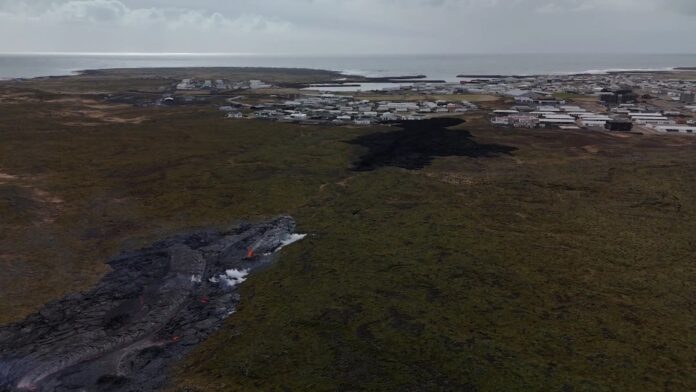Freysteinn Sigmundsson, geophysicist, believes that if land starts rising again after yesterday’s volcanic eruption, a certain period of uncertainty will follow.
The most likely scenario discussed before the eruption began was a large eruption with a short lead-up. However, the reality was different, and the magma dyke that formed throughout yesterday played the main role, says Freysteinn Sigmundsson, geophysicist at the Institute of Earth Sciences, University of Iceland, who was a guest on RÚV yesterday evening.
He says that the event was significant despite the eruption being small. It is comparable to the largest event that occurred on 10 November 2023 when the eruption episode began. Then, the largest volume of magma flowed even though no eruption took place.
The magma dyke that formed yesterday is the second longest to have emerged in the volcanic episode on the Reykjanes peninsula since the sequence began on 10 November 2023. It stretches a total of 20 kilometres from end to end and extends further north than has previously been seen. However, the one that formed on 10 November was likely five times larger.
“Magma dykes open easily in the crust when there are forces that can be released,” says Freysteinn. Iceland lies on a plate boundary where the tectonic plates are pulling apart and constantly building up.
“And we might have thought those forces had already been released, but they hadn’t, and what surprised me most yesterday is how big a part the magma dyke plays,” he says. In the last eruption, the magma dyke was small and most of the lava reached the surface.
“But now it seems that most of the magma that moved has settled into the magma dyke,” says Freysteinn, noting that the magma will eventually solidify and continue forming the Icelandic crust.
Like many other experts, Freysteinn says it is impossible to assess what will follow after today. It will be necessary to wait at least two to three weeks before it is possible to determine whether uplift will begin again.
“I see it as something that first needs to run its course,” says Freysteinn. “I think the most likely scenario is that magma inflow will continue or resume,” says Freysteinn, who believes it is possible that magma inflow never actually stopped over the 15 months that the eruption episode has lasted.
Source: Ruv.is




